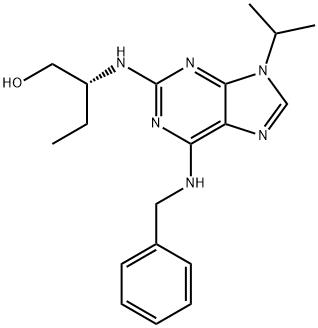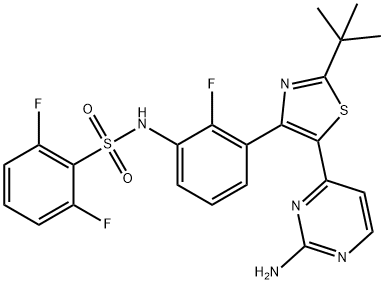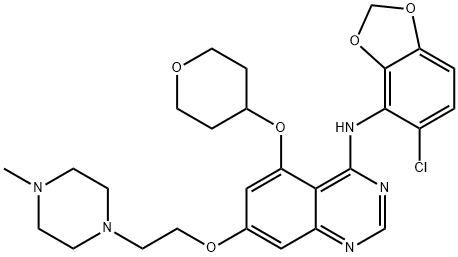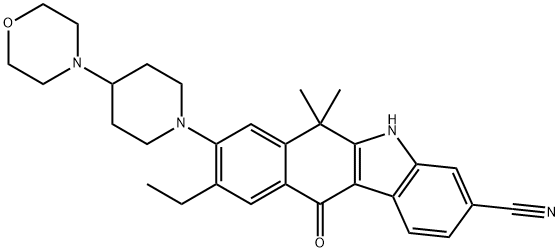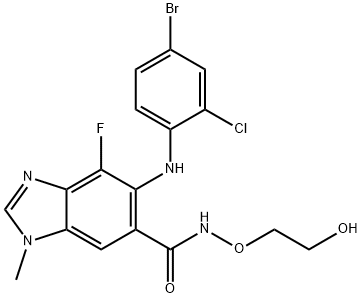PHA 767491 HYDROCHLORIDE
Synonym(s):1,5,6,7-Tetrahydro-2-(4-pyridinyl)-4H-pyrrolo[3,2-c]pyridin-4-one hydrochloride;2-Pyridin-4-yl-1,5,6,7-tetrahydro-pyrrolo[3,2-c]pyridin-4-one hydrochloride;PHA-00767491 hydrochloride
- CAS NO.:845714-00-3
- Empirical Formula: C12H11N3O
- Molecular Weight: 213.24
- MDL number: MFCD11870790
- SAFETY DATA SHEET (SDS)
- Update Date: 2024-11-19 23:02:33
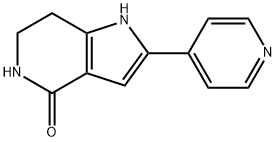
What is PHA 767491 HYDROCHLORIDE?
The Uses of PHA 767491 HYDROCHLORIDE
Cdc7 kinase is a key regulator of the S-phase of the cell cycle. It is known to promote the activity of DNA replication origins in eukaryotic organisms. Inhibition of Cdc7 kinase causes blockade of DNA synthesis in human cell lines. Tumor cells are then funneled into the apoptotic pathway in a p53-independent manner. Pharmacological inhibition of Cdc7 kinase can be an effective strategy for the development of oncologic therapeutics useful for treatment of cancers. PHA 767491 HYDROCHLORIDE is a potent inhibitor of Cdc7 kinase with an IC50 value of 10 nM in the presence of 1.5 μM ATP. At 10 μM, PHA 767491 HYDROCHLORIDE induces apoptotic cell death in multiple cancer cell types. PHA 767491 HYDROCHLORIDE also inhibits Cdk9, a kinase involved in the phosphorylation of RNA polymerase II and in transcriptional regulation of gene expression, with an IC50 value of 34 nM.[Cayman Chemical]
The Uses of PHA 767491 HYDROCHLORIDE
PHA 767491 is a potent and selective ATP-competitive dual inhibitor cdc7/cdk9. It blocks DNA synthesis and affects the phosphorylation of the replicative DNA helicase at Cdc7-dependent phosphorylation sites. Inhibits cell proliferation in a variety of human cell lines and induces apoptosis in a p53-independent manner in vivo. Also inhibits mitogen-activated protein kinase-activated protein kinase-2 (MK-2).
What are the applications of Application
Cdc7/Cdk9 Inhibitor is a potent, reversible, and ATP-competitive inhibitor of Cdc7 and Cdk9
Definition
ChEBI: 2-pyridin-4-yl-1,5,6,7-tetrahydropyrrolo[3,2-c]pyridin-4-one is a pyrrolopyridine.
Biological Activity
Potent, ATP-competitive dual cdc7/cdk9 inhibitor (IC 50 values are 10 and 34 nM respectively) that prevents initiation of DNA replication. Inhibits cell proliferation in a variety of human cell lines (IC 50 ~ 0.86 - 5.87 μ M) and induces apoptosis in a p53-independent manner in vivo . Also inhibits mitogen-activated protein kinase-activated protein kinase-2 (MK-2) (IC 50 = 171 nM).
Properties of PHA 767491 HYDROCHLORIDE
| Density | 1.287 |
| storage temp. | Desiccate at RT |
| solubility | insoluble in H2O; insoluble in EtOH; ≥10.65 mg/mL in DMSO |
| form | solid |
| Stability: | Hygroscopic |
| CAS DataBase Reference | 845714-00-3 |
Safety information for PHA 767491 HYDROCHLORIDE
Computed Descriptors for PHA 767491 HYDROCHLORIDE
New Products
Tert-butyl bis(2-chloroethyl)carbamate (S)-3-Aminobutanenitrile hydrochloride N-Boc-D-alaninol N-BOC-D/L-ALANINOL 3-Morpholino-1-(4-nitrophenyl)-5,6-dihydropyridin- 2(1H)-one N-octanoyl benzotriazole 3,4-Dibenzyloxybenzaldehyde 1,1’-CARBONYLDIIMIDAZOLE R-2-BENZYLOXY PROPIONIC ACID 1,1’-CARBONYLDI (1,2-4 TRIAZOLE) 4-HYDROXY BENZYL ALCOHOL 3-NITRO-2-METHYL ANILINE (2-Hydroxyphenyl)acetonitrile 4-Bromopyrazole 5-BROMO-2CYANO PYRIDINE 5,6-Dimethoxyindanone 5-broMo-2-chloro-N-cyclopentylpyriMidin-4-aMine 2-(Cyanocyclohexyl)acetic acid 4-methoxy-3,5-dinitropyridine 2-aminopropyl benzoate hydrochloride 1-(4-(aminomethyl)benzyl)urea hydrochloride tert-butyl 4- (ureidomethyl)benzylcarbamate diethyl 2-(2-((tertbutoxycarbonyl)amino) ethyl)malonate Ethyl-2-chloro((4-methoxyphenyl)hydrazono)acetateRelated products of tetrahydrofuran
You may like
-
 N-Vinylformamide 99%View Details
N-Vinylformamide 99%View Details
13162-05-5 -
 Chloro Uracil 1820-81-1 99%View Details
Chloro Uracil 1820-81-1 99%View Details
1820-81-1 -
 2-ethyl-6-methyl-3-hydroxypyridine succinate 99%View Details
2-ethyl-6-methyl-3-hydroxypyridine succinate 99%View Details
127464-43-1 -
 2-ETHYLPYRIDINE 100-71-0 99%View Details
2-ETHYLPYRIDINE 100-71-0 99%View Details
100-71-0 -
 7439-89-6 Electrolytic Iron Flakes 99.9% MaxView Details
7439-89-6 Electrolytic Iron Flakes 99.9% MaxView Details
7439-89-6 -
 7439-89-6 98.0% MinView Details
7439-89-6 98.0% MinView Details
7439-89-6 -
 Reduced Iron Powder 99.8% MaxView Details
Reduced Iron Powder 99.8% MaxView Details
7439-89-6 -
 Electrolytic Iron Powder 7439-89-6 99.8% MaxView Details
Electrolytic Iron Powder 7439-89-6 99.8% MaxView Details
7439-89-6
